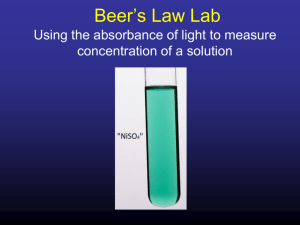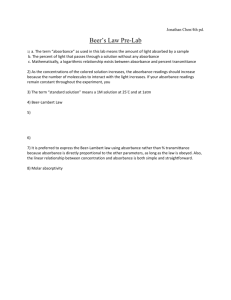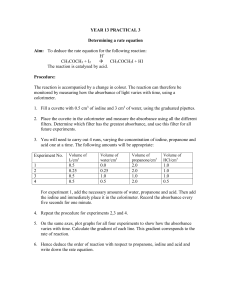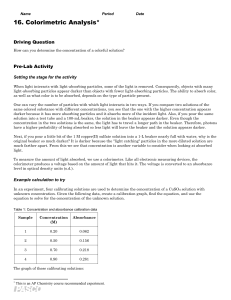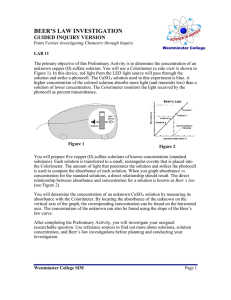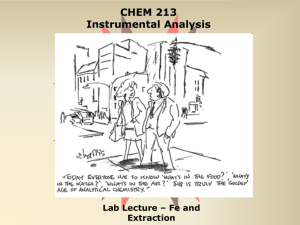Beer's Law Lab
advertisement
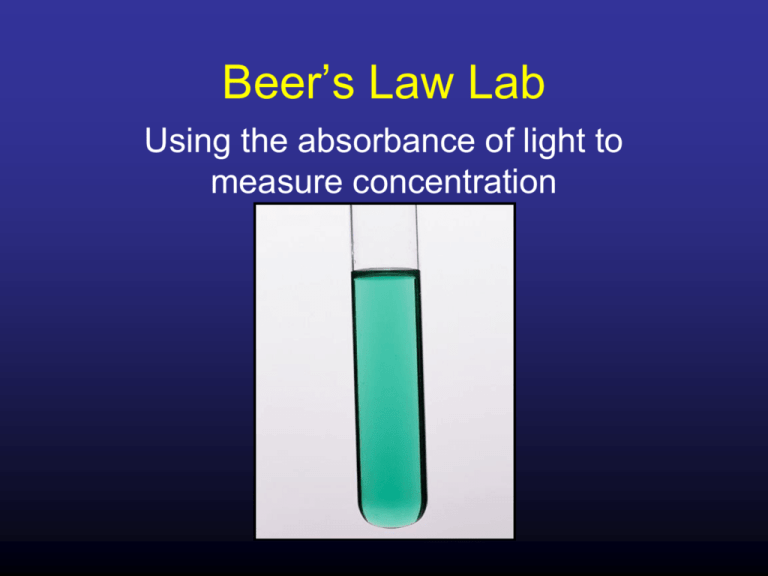
Beer’s Law Lab Using the absorbance of light to measure concentration Absorbance and Concentration • This lab is based on the principle that the “darker” a solution, the more concentrated it is • A concentrated solution is “darker” because the solute absorbs light Absorbance and Concentration • You can QUANTITATIVELY measure the concentration of solution by measuring how much light is absorbed Colorimeter • Measures numerically how much light is absorbed by a sample “Absorbance” Colorimeter • A colour of light is used that is absorbed well by the solution • The colorimeter compares the intensity of light entering and leaving the sample. Cuvette • Used to hold the sample • Handle by the ridges • Light enters and leaves on the smooth sides Cuvette • make a reference mark on one smooth side to line up the cuvette consistently • Wipe fingerprints and dust away from smooth surface with a tissue Calibration • When the cuvette contains only water, it should read 0.00 absorbance. • Calibration corrects the absorbance reading to take into account any light absorbed by the plastic cuvette or the water. Making Standard Solutions • A Series of dilutions make a set of solutions of known (calculated ) concentrations • Absorbance of each solution is measured Creating a calibration curve • Absorbance vs. Concentration is plotted Determining the concentration of an unknown sample • Measure Absorbance • Use graph to determine Concentration of unknown sample Determining the concentration of an unknown sample • Use the equation for the line: • Abs = (slope) Conc and the slope value from the graph to calculate Conc. Of the unknown Example • If your unknown is measured to have an absorbance of 0.250, what is its concentration? • Use the graph • Use the equation: y = 1.2109 x or Abs = 1.2109 (Conc) Rearrange: x = y/1.2109 or Conc = Abs/ 1.209 x = Conc. = 0.250 /1.209 x = Conc. = 0.206 mol/L Expectations • You will be evaluated on the following: 1. A pre-lab quiz testing your knowledge of the theory and the procedure /8 2. Your dilution calculations for your standard solutions /3 3. Your graph /5 4. The accuracy of your unknown concentration /3 Total marks = /19
